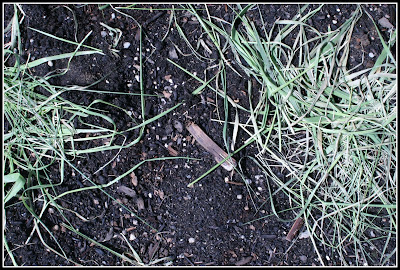

Push mowers and mulching mowers both work well for grasscycling. For a 3-inch tall lawn, you want 1-inch long clippings, so mow when your grass is roughly 4 inches tall. Choose the Right Length.* You want clippings to be roughly 1/3 the height of your grass.To get the most out of grasscycling, follow these tips when you mow: Grasscycling is an easy way to harness the natural fertilizing power of your grass clippings. That means you can leave your clippings behind in your yard without worry. But thatch is mostly made up of roots and stems, and grass clippings do not actually add to thatch buildup. Grass clippings are, by definition, dead plant life, so many people mistakenly believe that clippings contribute to heavy thatch buildup. This causes the grass to thin, yellow, and die, often requiring lawn aeration services. When thatch gets too thick, it prevents proper airflow and cuts your grass off from essential nutrients. Thatch is a layer of dead plant life that naturally builds up on the surface of your lawn’s soil. That being said, make sure you don’t let your grass get too long, as the clippings will pile up and take longer to decompose, leaving piles of grass everywhere. This helps grass grow green er, healthier, and thicker. When you leave your clippings on your lawn, you give them the chance to decompose, releasing water and nutrients back into your lawn’s soil. Clippings contain the same things as the rest of your grass – including water and the nutrients (especially nitrogen) that your lawn needs to stay healthy. Simply put, grass clippings are good for lawns because they turn into natural fertilizer. Learn the uses of grass clippings and how you can start grasscycling the right way. In fact, grass clippings can effectively fertilize your lawn between routine fertilization treatments. The most common misperception homeowners have is that clippings lead to thatch buildup, which damages the grass. It’s a common practice that helps build a healthy lawn. “Grasscycling” is a technical-sounding word that means leaving your grass clippings behind when you mow. The short answer is yes: clippings can be healthy for your lawn.

You should tackle each of these issues first before you leave your grass clippings on your lawn.Lawn care service experts are regularly asked if grass clippings are good for lawns and what to do with grass clippings.

#DOES GRASS CLIPPINGS HELP GRASS GROW FULL#
If the grass shows signs of disease or is full of weeds, you will only spread the disease and weeds further around your garden. There are a couple of instances when you should avoid leaving grass clippings on your lawn. It will also make your lawn look unsightly. For this reason, you should avoid leaving wet grass clippings on your lawn as they will clump together and be difficult to break down. Longer grass will take longer to break down and will block sunlight from reaching the grass underneath, and may limit grass growth. Some lawnmowers have a mulching mode which does this for you, making them ideal for leaving your grass clippings on the lawn. Shorter grass will break down into the lawn quicker. Only leave grass clippings on the lawn if they are quite short.

If you cut your grass weekly and remove the clippings from the lawn every time, you may actually be harming your lawn as you will be creating a nitrogen deficient. It does not create thatch like some people believe. Leaving your grass clippings on the lawn provides a great natural fertiliser for your lawn.


 0 kommentar(er)
0 kommentar(er)
